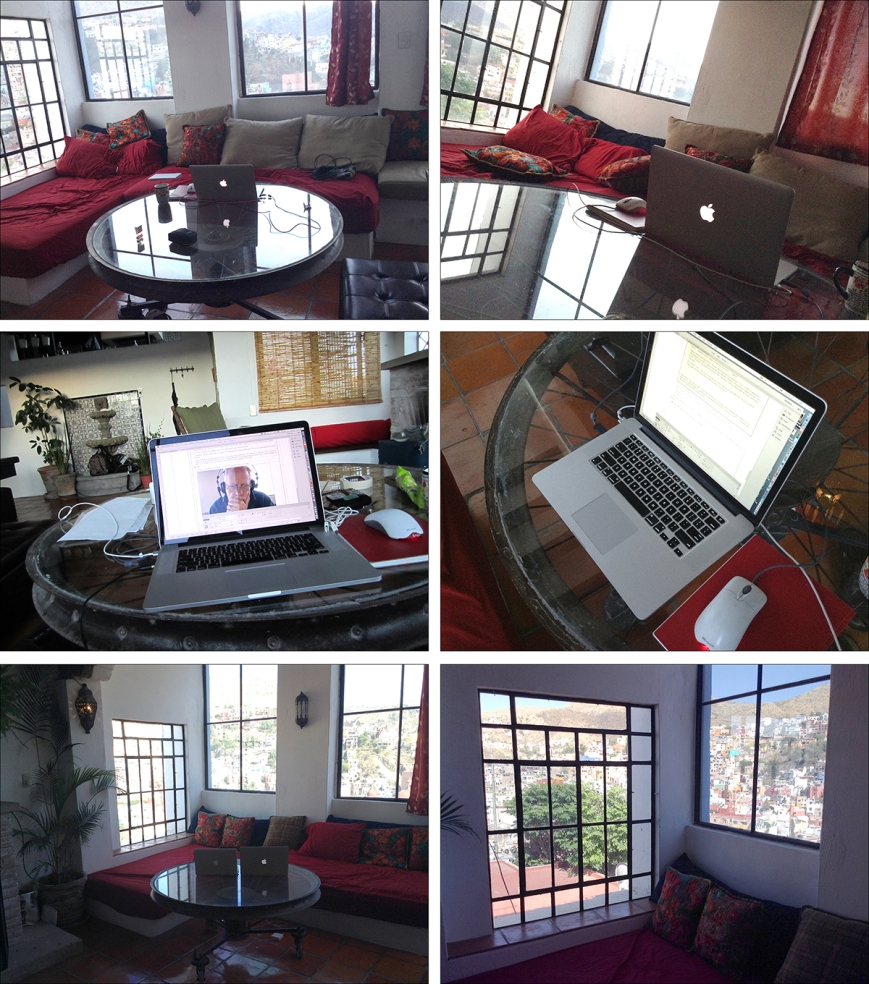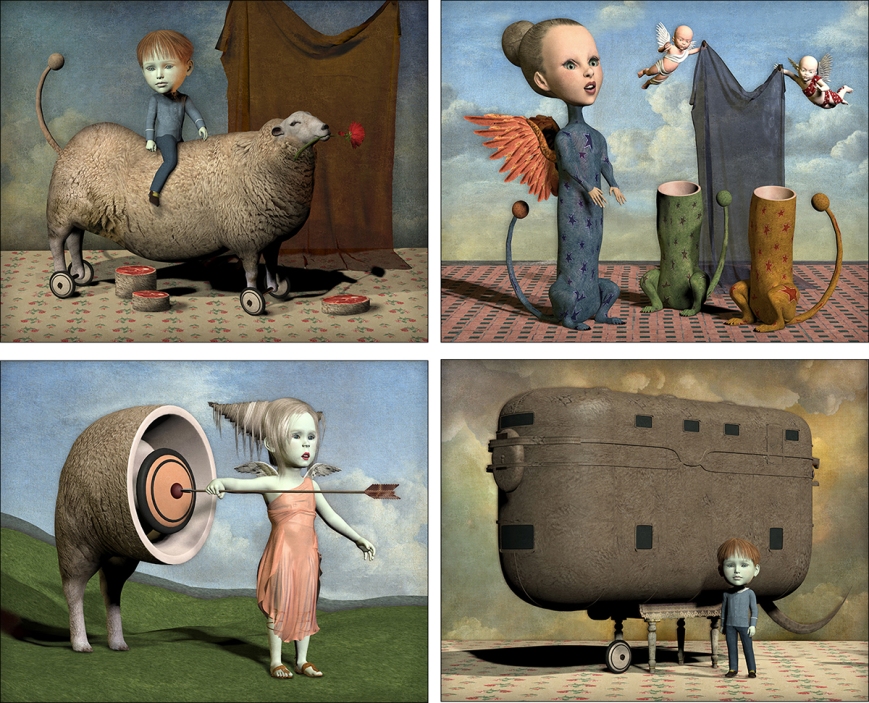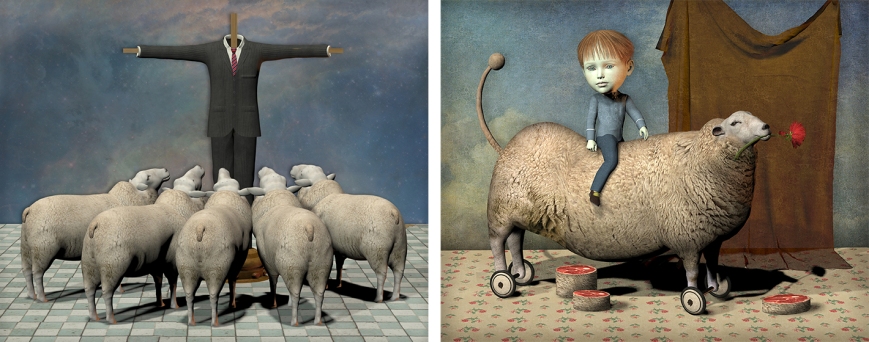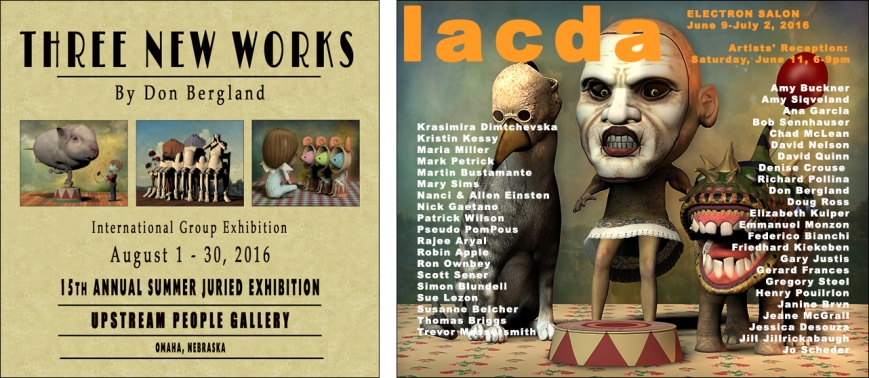“Artifacts of Eternity” was a sequence of 16 mystic paintings created in Guanajuato, Mexico in the Spring of 2017 while I was pursuing a studio residency in the city.
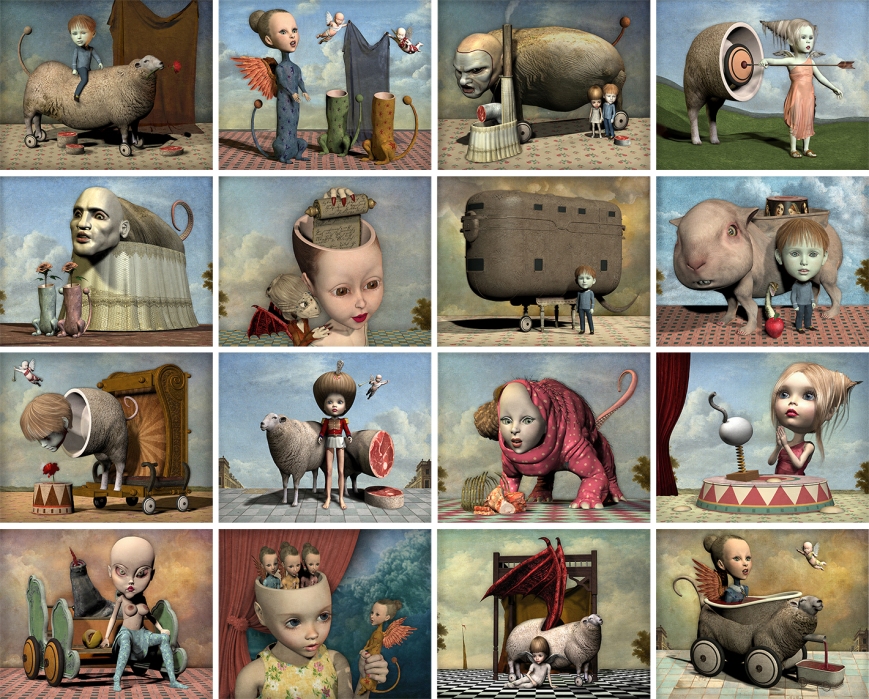
The series grew out of my own extended philosophical struggles with the concept of Death and Eternity and were given a physical context through some intensive ethnographic explorations of selected Christian cathedrals located in Guanajuato.
My own philosophical struggles with the concept of Death and Eternity have long consumed me. Whereas I now understand the former as the annihilation of consciousness, I want to believe that the latter is the ultimate extension of consciousness. Eternity is the ultimate mystic promise of the extension of one’s identity. I am interested in ideologies which are designed to offer this reward to its participants. Whether Eternity signifies endless time, or merely the absence of time is not important. It implies that the consciousness of the person has extension, is alive, and continues to exist. I have long sought to find a visual language capable of expressing these thoughts and feelings. The work in this series is but a small step towards that desire.
While researching the content for this series, thoughts of this sort found a physical dimension in the ethnographic explorations of selected Christian cathedrals circling the central part of the city of Guanajuato.
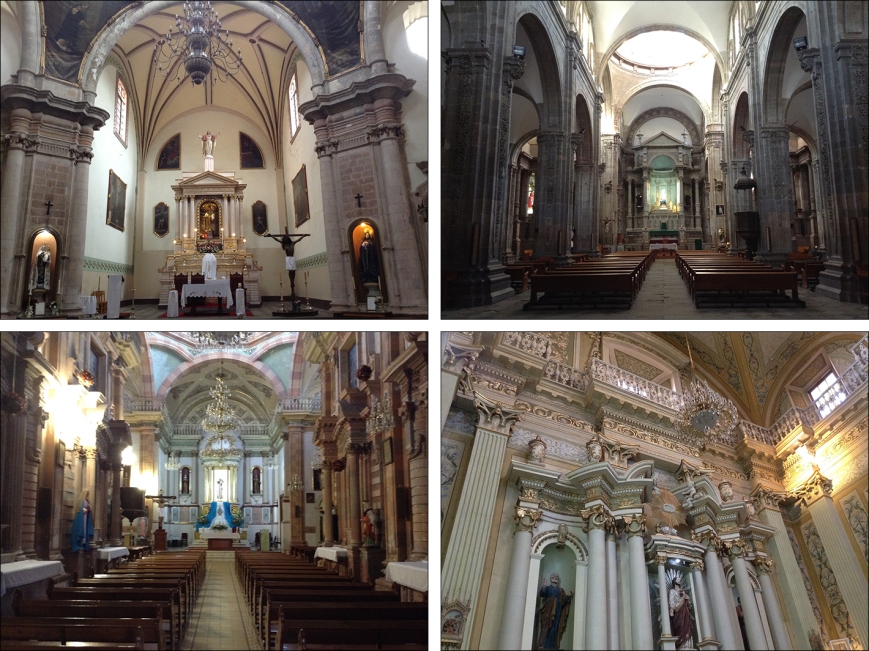
I found I could enter these cathedrals and experience the pure energy of believers, those whose faith in this promise of destined salvation is immutable. On weekly journeys, I would walk around these great engines of faith and seek for evidence of eternity, artifacts of the annihilation of oblivion, objects that promoted a sense of the conquest of mortality. When I discovered objects whose appearance hinted at these things, I would study and memorize them, their presence making appearances as mementos of symbolism in the surfaces comprising the work in this series.

This series has focused on religious psychology and the the use of voluntary ideological practice as expressed through historical Christianity. It takes as its aesthetic foundation, medieval and Baroque expressions of Christianity and uses the art, architecture, writings, and practice of these periods as sources of inspiration and artistic expression. The narratives related in the theatrical sets of this visual series are not orthodox in their presentation. I myself am not a religious person nor do I practice a structured religion. I was raised a Lutheran, but became an apostate in my early teens. I engage in this theme not as a believer, but as an aficionado of religious belief and faith. Even though I no longer believe or possess faith, there is a large part of me that admires and envies those who do. It is through respect of the ideological structures which form the envelope of this belief system, that I explore them in creative detail. The artworks I invent are restatements of the old stories, and more importantly, they are meditations upon which anyone who thinks deeply about existence should find, if not answers, at least new directions for reflection. As an example of that metaphoric meditation, we can briefly analyze two of the images in the series.
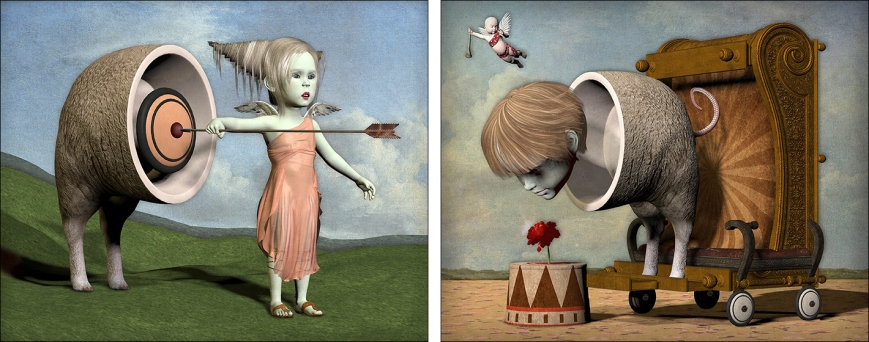
The first image above is called, “Redemption,” and was a study in simplicity of form and composition representing potential complexity in thought. The general presentation focused on a central word concept. The word we translate in English as “sin” from the original New Testament, is the Greek word, “Hamartia.” This was an ancient archery term which meant the slight missing of the center of the target. The work also used the lamb as symbolic representation of enlightenment. As we gaze in the opposite direction of our purpose, we may sometimes feel the exit of mortality that opens between our conscious awakening and that broken point of immediacy that represents our distance from eternity.
The second image, called “Penance,” also used the same lamb figure as a symbolic icon but placed it within the furniture of the traditional church confessional. In this piece we are invited to visually experience the invented mechanisms of confession that are offered within a system of ordained salvation, and watch on as this penitent discovers in the immediate moment of reality, a reconciliation with the change of consciousness required for entry into the Eternal.
When people look at this series, I want them to feel their own mortality whispering over their shoulder. I want them to question the narratives they have adopted for their own endings.
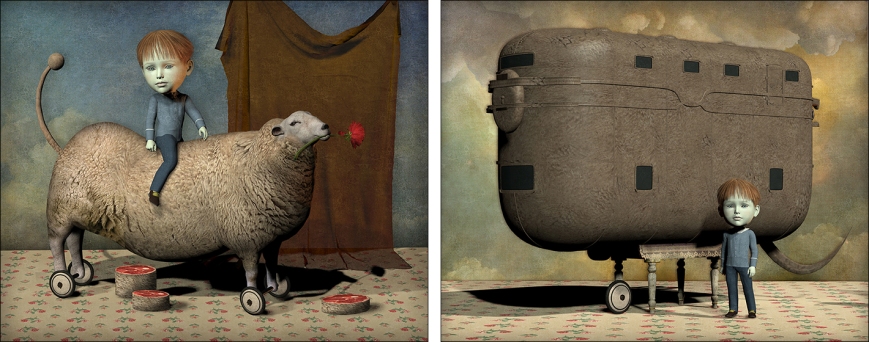
I want them to question the stories they have built that provide meaning for their own existence.


